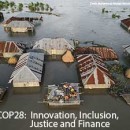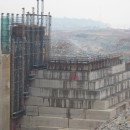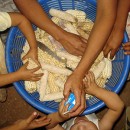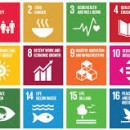Languages
Wednesday, April 24, 2024
News and Views from the Global South
Bringing Seeds of Hope to Farmers
Amidst a backdrop of rising food insecurity worldwide and a global food supply chain crisis, many countries are attempting to increase the level of food self-production. One improved input for farming which is receiving renewed attention is improved seed. The two most populous countries in the world, China and India, have recently made ground-breaking moves to improve their competitive position by developing new seeds which will improve their food production and increase resilience to climate change. So far, in 2022, new regulations on using biotechnology (genetic modification and gene editing) have been put in place by both countries to ultimately allow smallholder farmers to benefit from these new seeds.
What This Year’s “No 1 Central Policy Document” Tells Us about Beijing’s Food Security and Rural Revitalisation Ambitions
The recently published “No 1 central policy document” (“No 1 document”), China’s national blueprint for rural policy, further demonstrates Beijing’s commitment to safeguarding food security and advancing rural revitalisation. The document’s release comes against an increasingly complicated geopolitical environment which, along with factors, such as disruptions to the global food chain supplies and worsening climate change impacts, have forced Beijing to rethink how its national goals can be achieved.
The Very Hungry Dragon: Meat-ing China’s Self-sufficiency Targets for Dairy and Protein
Food security has long been a high priority for the Chinese central government and has been linked to China’s national security in recent years. The Ministry of Agriculture and Rural Affairs recently released a national five-year plan under which China will seek to maintain a target to produce 95 percent of the protein domestically until 2025: China aims to become self-sufficient in poultry and eggs, 85 percent self-sufficient for beef and mutton, 70 percent for dairy, and 95 percent self-sufficient in pork. These targets intersect with many of the Chinese central government’s current aims to meet the growing demand for protein and dairy, safeguard food security, and other major policies.
Looking to the Future: China’s Priorities for Food Security in 2022 and Beyond
Safeguarding food security has long been a critical priority for the Chinese central government. President Xi’s latest comments and meetings demonstrate continued concerns at the top about China’s food security. Ahead of the 20th National Congress this year and the release of the No 1 policy document, there are already several hints regarding what the Chinese central authorities could prioritise in terms of food security for this year and beyond. Other factors, including the potential influences of gene-edited plants, commercialisation of genetically modified (GM) crops, and of a Russia-Ukraine conflict should also be considered.
China Opens Embassy in Nicaragua for First Time since 1990 after Taiwan Ties Cut
For the first time since 1990, China has (re)opened an embassy in Managua, Nicaragua, less than a month after Nicaragua cut ties with Taiwan. The (re)opening of the embassy on January 1, 2022 comes amidst the backdrop of US-China tensions, particularly over trade and Taiwan, as well as worsening Cross-Straits relations.
Why Does Yangtze River Have its Own Protection Law?
The new Yangtze River Protection Law (YRPL), which came into effect on March 1, 2021, is China’s first legislation on a specific river basin. The Yangtze River is China’s longest and largest river system, stretching over 6,300 kilometres and has over 700 tributaries. With a drainage basin covering more than 1.8 million square kilometres, approximately one-fifth of China’s total land area, the river basin is home to over 40% of the country’s population.














